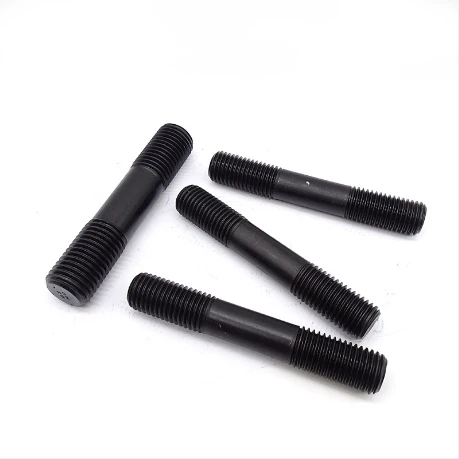

Installing Self-Tapping Screws in Cast Iron for Enhanced Durability and Efficiency
Oct . 15, 2024 20:30 Back to list
Installing Self-Tapping Screws in Cast Iron for Enhanced Durability and Efficiency
Self-Tapping Screws into Cast Iron A Comprehensive Guide
When it comes to fastening materials, self-tapping screws are a popular choice due to their ease of use and efficiency. While they work excellently with a variety of materials, using self-tapping screws in cast iron presents unique challenges and considerations. This article aims to explore the best practices for utilizing self-tapping screws in cast iron applications, the types of screws to consider, and some essential tips for achieving a secure and long-lasting connection.
Understanding Cast Iron
Cast iron is a strong, brittle material that has been used in a myriad of applications, ranging from engine parts to cookware. Due to its high tensile strength and excellent castability, it is a favored choice in construction and manufacturing. However, the properties that make cast iron desirable also contribute to the challenges faced when fastening it with self-tapping screws. Cast iron can crack if not handled properly, and the drilling process must be approached with care to avoid damaging the substrate.
Types of Self-Tapping Screws
When choosing self-tapping screws for cast iron, it is essential to select the right type
1. Thread-Forming Screws These screws create their threads as they are driven into the material, displacing the material without cutting it. They are ideal for softer materials but may not be the best option for cast iron due to its brittleness.
2. Thread-Cutting Screws These screws cut their threads into the base material as they are driven in. They are more suitable for cast iron, as they allow for easier insertion and reduce the risk of cracking.
3. High-Speed Steel Screws Made from high-speed steel, these screws can withstand the hardness of cast iron and are designed for tough applications.
Preparing for Installation
Before using self-tapping screws in cast iron, several preparatory steps are crucial
self tapping screws into cast iron

- Select the Appropriate Screw Size The diameter and length of the screw should correspond to the thickness of the cast iron part. Using a screw that is too long can lead to damage, while one that is too short may not provide enough hold.
- Pre-Drill Holes To minimize the risk of cracking the cast iron, it is often recommended to pre-drill holes using a drill bit specifically designed for metal. This also helps in guiding the self-tapping screw, making installation smoother and more controlled.
- Use Lubrication Applying a little lubricant to the screw can reduce friction and make it easier to drive into the cast iron, helping you avoid overheating and damaging both the screw and the material.
Installation Tips
When installing self-tapping screws into cast iron, consider these best practices
- Drive at the Right Speed Use a power drill with adjustable speed settings. Start with a slower speed to carefully penetrate the cast iron and avoid stripping the screw head.
- Maintain a Steady Pressure Apply consistent pressure while driving the screw. This helps ensure that the screw engages with the material without excessive force, reducing the risk of cracking.
- Check for Proper Seating Once the screw is installed, check to see that it is properly seated without any gaps. A loose screw can lead to vibrations and potential failure of the connection.
Conclusion
Using self-tapping screws in cast iron can be an effective fastening method if approached with care and the right preparations. By selecting the appropriate type of screw, preparing the surface correctly, and following best practices during installation, you can achieve a secure and durable connection. Remember to prioritize the integrity of the cast iron material throughout the process, as its unique properties require mindful handling. With these strategies in place, you'll be well-equipped to tackle a variety of projects involving cast iron and self-tapping screws.
Latest news
-
High-Strength Hot-Dip Galvanized Bolts-Hebei Longze|Corrosion Resistance&High Strength
NewsJul.30,2025
-
Hot Dip Galvanized Bolts-Hebei Longze|Corrosion Resistance&High Strength
NewsJul.30,2025
-
Hot Dip Galvanized Bolts - Hebei Longze | Corrosion Resistance, High Strength
NewsJul.30,2025
-
High-Strength Hot Dip Galvanized Bolts-Hebei Longze|Corrosion Resistance, Grade 8.8
NewsJul.30,2025
-
Hot Dip Galvanized Bolts-Hebei Longze|Corrosion Resistance,High Strength
NewsJul.29,2025
-
High-Strength Hot Dip Galvanized Bolts - Hebei Longze Metal Products Manufacturing Co., Ltd.|corrosion resistance&high strength
NewsJul.29,2025

